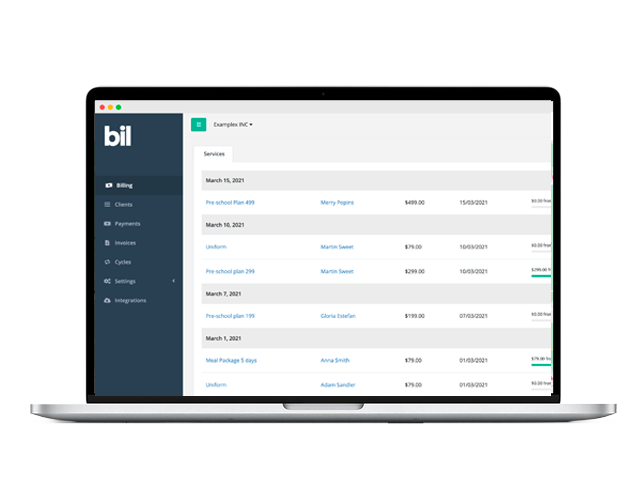How to Build a Proper Billing System for Your Clients
If you're a small business owner, then you know how important it is to have a billing system in place for your clients. Not only does it make your life easier, but it also shows your clients that you're professional and organized.

Photo by Tara Winstead on Pexels
But what exactly goes into a billing system? In this blog post, we'll break it down for you so that you can build a proper billing system for your business. We'll cover the importance of a billing system, the components of a billing system, and how to put it all together. By the end of this post, you'll be ready to streamline your billing process and take your business to the next level.
The Importance of a Billing System.
A billing system is an essential tool for any business that offers services or products on a regular basis. There are many benefits to having a billing system, including:
1. Increased Efficiency and Productivity: A billing system can automate many of the tasks associated with invoicing and payments, freeing up time for you and your staff to focus on other tasks.
2. Improved Customer Service: A billing system can help you keep track of customer information and preferences, making it easier to provide them with the level of service they expect.
3. Reduced Costs: A billing system can help you save money by reducing the need for paper invoices and manual processing of payments.
4. Increased Accuracy: A billing system can help you avoid mistakes by automatically generating accurate invoices and tracking payments.
5. Improved Cash Flow: A billing system can help you get paid faster by automating the invoicing and payment process.
The Costs of Not Having a Billing System.While there are many benefits to having a billing system, there are also costs associated with not having one. These costs can include:
1. Lost Revenue: If you don't have a billing system, you may miss out on revenue opportunities due to inefficient invoice management and tracking of payments.
2.Increased expenses: Without a billing system, you may incur higher expenses due to manual processing of invoices and payments, as well as storage and retrieval of paper records.
3.. Poor customer service: If you don't have a way to track customer information and preferences, you may provide poor customer service, which can lead to lost business or customers taking their business elsewhere..
The Components of a Billing System.
A client database is the foundation of any billing system. It should contain all the information necessary to generate invoices and track payments. At a minimum, this includes the client's name, contact information, and account history.
Ideally, your client database would be integrated with your invoicing and payment processing systems. This would allow you to automatically generate invoices and track payments. However, if you are using a manual system, you will need to enter this information into your database manually.
There are many different ways to store this information. A simple spreadsheet can be used for small businesses with few clients. For larger businesses, a more robust database system may be necessary. There are many software options available, both commercial and open-source.
The Invoicing System.Once you have your client database set up, you will need to create a way to generate invoices. This can be done manually or through software. If you have a small number of clients, you may be able to get by with creating invoices in a word processing program or spreadsheet application.
However, as your business grows, you will likely need to invest in invoicing software. There are many different options available, both commercial and open-source. Some of these programs are designed specifically for billing, while others (such as accounting software) include billing features as part of a larger package.
When choosing an invoicing system, look for one that is easy to use and integrates well with your other systems (such as your payment processor). It should also allow you to customize the appearance of your invoices so that they match your branding .
The Payment Processor..Your payment processor is how you will actually collect payments from your clients . There are many different options available , from traditional merchant accounts to newer online payment processors . Each has its own advantages and disadvantages , so it's important to choose the right one for your business .
Some factors to consider when choosing a payment processor include:
* Fees - Look for a processor with low fees , especially if you process large volumes of payments .
* Security - Make sure the processor offers features such as fraud protection and data encryption .
* Ease of use - Choose a processor that is easy to set up and use , both for you and your clients .
* Compatibility - Ensure that the processor works with your other systems , such as your invoicing software .
Putting It All Together.
There are a few things to consider when choosing a billing system for your business. The first is whether you want a cloud-based or on-premises solution. Cloud-based solutions are typically more affordable and easier to set up, but they may not offer as much customization or control as on-premises solutions.
The second thing to consider is what features you need. Some common features to look for include invoicing, time tracking, project management, client portals, and automated payments. Make sure to choose a system that has all the features you need to run your business smoothly.
Third, you'll want to consider ease of use. The last thing you want is a billing system that's so complicated that it takes hours to learn how to use it. Look for a system with an intuitive interface and plenty of documentation to help you get started.
Once you've considered all these factors, it's time to start shopping around for the right billing system for your business. There are dozens of options out there, so take your time and find one that's a good fit for your company.
Step 2: Set Up Your Client Database
After you've chosen a billing system, it's time to set up your client database. This is where you'll store all the information about your clients, including their contact information, project details, and payment history.
If you're using a cloud-based solution, setting up your client database will be easy - most systems come with pre-built templates that you can use. If you're using an on-premises solution, you'll need to create your own database from scratch or purchase a third-party software solution.
Either way, make sure that your client database is secure and backed up regularly so that you don't lose any data if something goes wrong.
Step 3: Set Up Your Invoicing System
Now that you have a place to store all your client information, it's time to set up your invoicing system. This is where you'll generate and send invoices to your clients.
again, if you're using a cloud-based solution, setting up your invoicing system will be easy - most systems come with pre-built templates that you can use. If you're using an on-premises solution,you'll needto createyour own invoicing templates or purchasea third-party software solution . Either way , make surethatyour invoicingsystemis easyto useand can generateinvoices in multiple formats (PDF , Excel , etc.) so thatyou can send themto anyclient .
Step 4: Set Up Your Payment ProcessorThe final step in setting up your billing system is integratinga payment processor . This will allowyou totake credit card paymentsfromyour clients electronically . Thereare several differentpayment processorsout there ,so do some researchand findone that works wellforyour business . Onceyou'vechosena payment processor , signupforan accountand followthe instructionsonhowtointegratetheir serviceinto yoursolution .
Conclusion
A proper billing system is essential for any business that wants to run smoothly and efficiently. The benefits of a billing system far outweigh the costs of not having one, and a well-designed billing system can save a business time and money. There are three key components to a billing system: the client database, the invoicing system, and the payment processor. Setting up a billing system can seem like a daunting task, but if you take it one step at a time, it is relatively straightforward. Choose the right billing system for your business, set up your client database, set up your invoicing system, and set up your payment processor. With a little effort, you will have a professional-looking billing system that will make doing business easier for both you and your clients.
